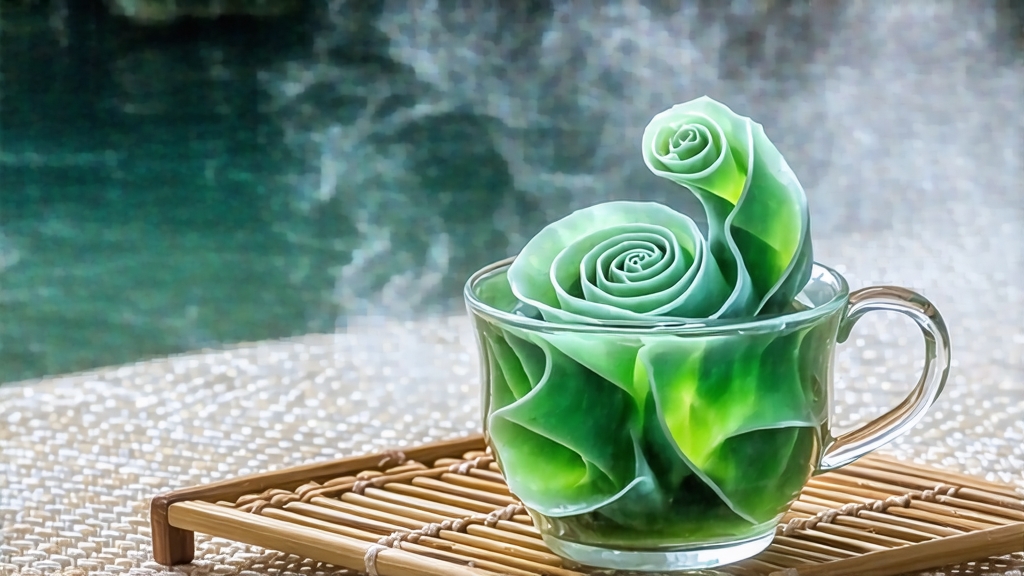
Biluochun, whose name translates literally to “Green Snail Spring,” is one of China’s ten most celebrated teas, yet it remains modestly hidden in the misty hills of Dongting Mountain beside Lake Tai in Jiangsu Province. International drinkers often greet the tea with surprise: its liquor is almost weightless, its aroma reminiscent of fresh apricot and wild orchid, and its leaf so tiny that a single gram contains hundreds of hand-rolled spirals. To understand why emperors once guarded it as a tribute tea and why modern sommeliers rank it alongside Burgundy grand crus, one must travel from Tang-dynasty poetry to 21st-century biodynamic gardens, tracing the interplay of microclimate, cultivar, and human touch.
History and Legend
The first written record appears in the Tang classic “The Classic of Tea” by Lu Yu, but the romantic story circulates during the late Kangxi period (17th c.). While on a southern inspection, the emperor was offered a small jar of unusually fragrant leaf. The infusion, pale as jade, carried the scent of flowering peach trees. Delighted, he renamed the tea “Biluochun” for its snail-shell shape and spring harvest. Court chroniclers note that the annual tribute weighed only 500 grams, picked at dawn on the Qingming festival by maidens whose fingernails were kept long to avoid body heat. Today the mountain yields more, yet the finest Mingqian (pre-Qingming) lots still vanish within days at prices rivaling silver.
Terroir and Cultivar
Dongting Mountain is actually two islands—East and West—rising from Lake Tai’s shallows. The water body moderates temperature, creating a mist that filters sunlight into a soft, diffused glow. Camellia sinensis var. sinensis bushes, many over 80 years old, grow interspersed with loquat, plum, and tangerine trees; their roots share mycorrhizal networks that concentrate amino acids, especially L-theanine, giving the tea its famed sweetness. Local growers distinguish between “Mountain” (shan) and “Lake” (shui) gardens: the former sit at 150–200 m on weathered granite, yielding mineral-driven, orchid notes; the latter lie closer to shore on silty loam, producing a rounder, apricot cup. Two clonal selections dominate: Xiao Ye (small leaf) for fragrance and Da Ye (big leaf) for body, often blended to balance complexity.
Harvest Calendar
The picking window is brutally short. By late February, tea bushes awaken; buds swell to “sparrow’s tongue” size, still sheathed in pale down. The ideal pluck is one bud plus the imminent first leaf, no longer than 2.5 cm, weighing 0.12 g fresh. Experienced pickers finish 500 g of raw leaf in three hours, enough for barely 100 g finished tea. Work begins at 5:30 a.m. when dew keeps cells turgid; baskets are shaded with wet hemp to prevent oxidation. First flush (Mingqian) arrives around March 20; second flush (Yuqian) before April 20; anything later is classified as “spring tea” but loses prestige. Frost risk is real: in 2021 a single night of 0 °C destroyed 30 % of the mountain crop, pushing top-grade prices above USD 3,000 per kg.
Crafting the Spiral
Unlike Dragon Well’s flat press or Taiping Houkui’s giant unfold, Biluochun is shaped entirely by hand in a hot wok, a technique called “killing green, rolling, and rubbing.” A 60 cm diameter iron pan is heated to 180 °C, then cooled to 80 °C within seconds by swirling a bamboo brush. Three handfuls—about 250 g—are tossed in; the maker’s palms vibrate at 120 rpm, curling leaf tips inward. Moisture drops from 74 % to 58 % in four minutes, yet enzymatic browning must be halted just shy of grassiness. Next comes the critical “rub and roll” stage: temperature falls to 60 °C, pressure increases, and the operator counts 180 cycles while lightly blowing on the leaves to cool them. The final “low fire” drying lasts 20 minutes at 50 °C, locking in 4 % residual moisture and fixing the tight spiral. Master craftsmen judge readiness by ear: a rustling akin to silk scarves is perfect; crackling means over